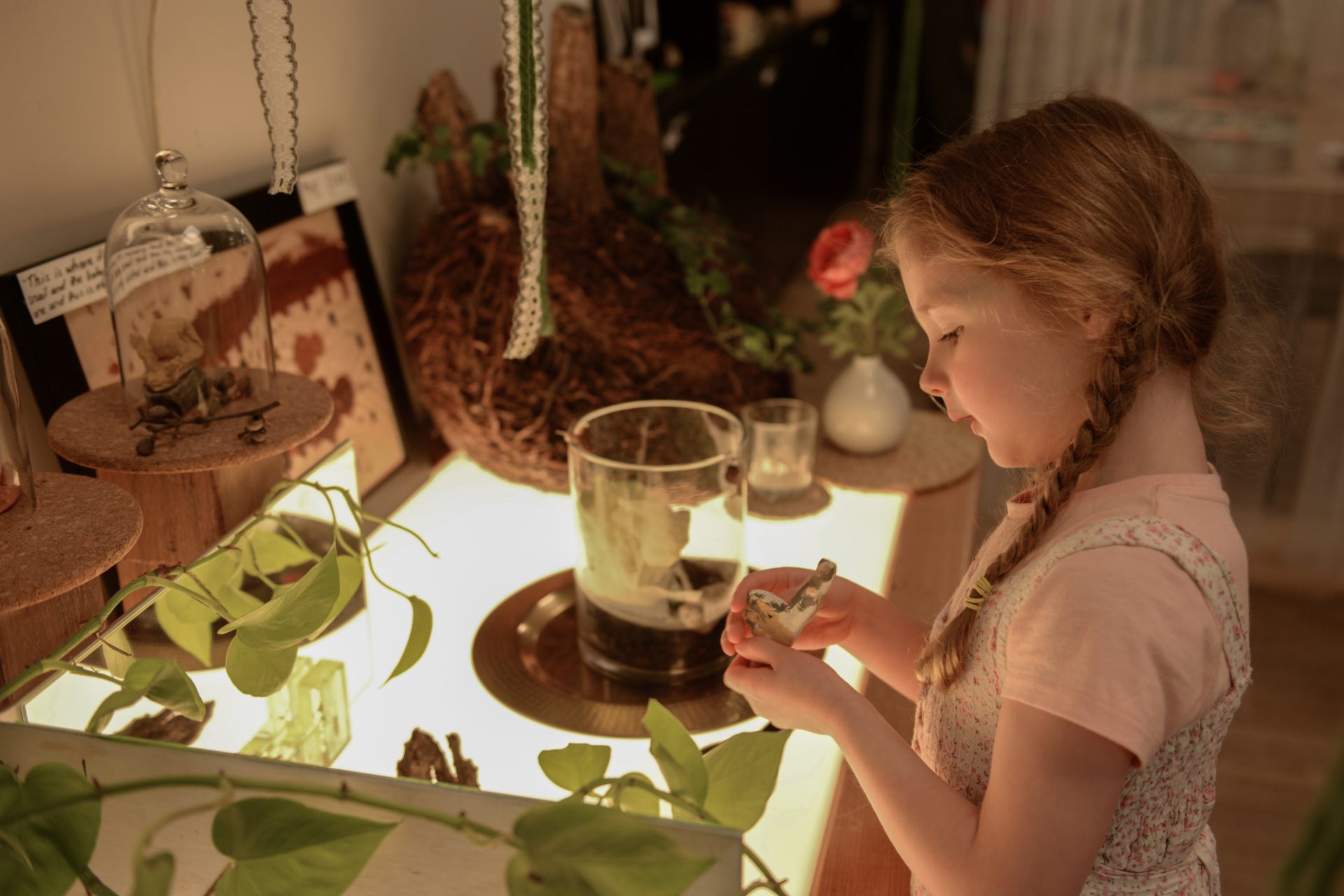
The power of the Reggio Emilia approach has far-reaching effects. Indeed, it’s not just about providing children with a great start in life. The skills they learn extend through the school years, into college, university and remain with a person throughout their entire life.
To understand why we need to delve a little deeper into the evolution of the human brain. From the moment a person is born this wonderful organ begins to be shaped by the experiences and the surrounding environment. The magic is underpinned by the creation of thousands upon thousands of tiny electrical impulses that form pathways in response to stimuli. These neurons play a huge part in building the foundations upon which the future adult will be built.
Reggio Emilia and the Case for Curiosity…
Children are innately curious. Show them a worm and they want to touch it… Start to bake a cake and they’re excited to join in… Play a pretend drum on the table and you’ll soon have a willing partner…
This behaviour is all part of the process of building the aforementioned neural pathways. The child sees something that piques their interest and needs to process the information. The best way to do that is to get hands-on – the feel of the worm, the taste of the cake mix as they lick their fingers and the feeling and sound of drumming on the table.
The Reggio Emilia approach is centred around encouraging this curiosity. Step inside any such learning space and you’ll be welcomed by beautifully light, airy spaces that are filled with natural materials, colour and tactile objects. Bland plastics and boring landscapes have no place here – instead, everything is carefully chosen to encourage exploration through all the senses. For example:
- Stones, twigs, shells, etc: Mother Nature provides a massive array of items for infinite use. Sorting pebbles into sizes or colours, using shells and twigs to create artistic masterpieces, crunching autumn leaves between fingers… Such play evokes sight, sound, touch and smell (and even taste, with the penchant most children have for putting things in their mouth!).
- Wooden furniture: Suitable sized for smaller humans, even simple items of furniture made from natural materials can encourage exploration. You only need to watch a child trace the grain of wood on a table to see this in action.
- Dress-up clothes: That are easily accessible for children to use as they choose. Different fabrics, colours and styles offer a wonderful platform for the imagination to flourish.
These are just a few examples – but the key takeaway is that providing children with multiple opportunities to question and marvel at their surroundings promotes exploration and… learning.
Making Learning a Joy – Not a Chore
When children are allowed to follow their instincts and explore what interests them, those neural pathways mentioned earlier become associated with a positive experience. This creates a base framework upon which the desire for further discovery builds. As the child grows, they continue to follow their interests, investigating and learning as they go.
As they move through school and beyond, those crucial building blocks that were laid during the early years help create a lifelong love of learning. This might well be academic – but it also relates to practical and emotional skills too.
The importance of this in early childhood education can’t be overstated, and it’s something that the educators at Evoke Early Learning centres are truly passionate about. You only need glance at our toddler and kindergarten classrooms to see this positive approach in action.
We run regular tours for parents and caregivers to see our team in action, so what are you waiting for? Book a tour today at either our Clayton or Albert Park locations and come and see for yourself. We can’t wait to meet you…

Tracey is a highly qualified educator and administrator and brings a strong combination of academic achievement, extensive work experience in the education and business sectors as well as drive and passion to her role as General Manager of Operations at Evoke Early Learning.
Tracey has a Master of Education and an Advanced Diploma of Business and holds VIT Dual Registration to teach in Early Childhood and Primary School settings. She’s also a VIT Trained Mentor Teacher and has worked in ECEC settings as a Director, Educational Leader and as a Victorian Senior Area manager. Her recognition as a state finalist in the recent Director of the Year Awards is testament to her achievements in the early education sector.
Her extensive work experience also included a stint as Head of Curriculum at the Royal Children’s Hospital Education Institute and positions as head of ICT at a number of large primary and secondary schools. Tracey is also experienced in not-for-profit sessional kindergarten settings and long daycare environments, so she has a deep understanding of what’s required to support the needs and expectations of young children, educators, parents and caregivers.
Tracey is responsible for operational management at Evoke Early Learning’s Clayton centre in Oakleigh East and their Albert Park centre in South Melbourne and is deeply committed to leading and driving effective and sustainable service delivery throughout the company.
Tracey is passionate about making a meaningful difference to young children, their parents and the wider community and under her expert guidance, Evoke Early Learning is continuing to raise the bar in quality early education and childcare.


